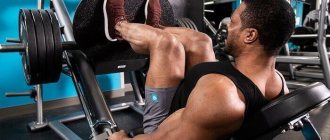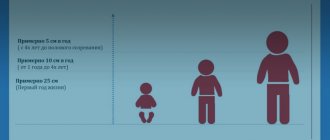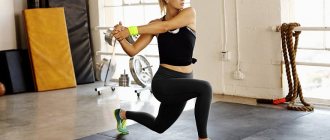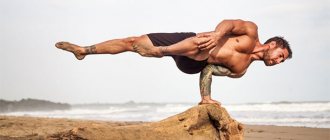Authors:
Durall CJ, Manske RC, Davies GJ.
Translation
Sergei Strukov.
One of the main responsibilities of a personal trainer or strength and conditioning specialist is to teach clients proper exercise technique. However, what is more important to the strength and conditioning professional is the ability to develop training programs that are safe and appropriate for the client. Because there are many exercises for each muscle or muscle group, it is wise to avoid exercises that are likely to cause injury.
Shoulder injuries are relatively common among weight trainees and can be career-destroying at the competitive level (14, 26). Fortunately, most shoulder injuries from resistance training are mild musculotendinous or ligamentous-capsular tears. However, the use of inappropriate exercises or techniques aggravates the situation or contributes to the development of glenohumeral joint instability (19, 21) or impingement (8, 9, 12, 16).
In this article, we will identify common exercises that contribute to or aggravate glenohumeral joint injuries. Alternative options and rationale for replacement exercises are described. A comprehensive review of undesirable exercises for known shoulder pathologies is not the purpose of the article: only pathologies associated with strength training are discussed. Avoiding hazardous exercise will help prevent injury in healthy clients and further tissue damage in people recovering from injury.
Anatomy and function of the middle delta
According to anatomical reference books, the deltoid muscle performs the main function of the spinal region - it is responsible for the work of the shoulder blades. And the load on the deltoid muscles is directly affected by the position of the shoulder joint.
- When the arms are lowered and the shoulder blades move, the rear delta works;
- when raised - front;
- the middle bundle plays a connecting role, called a synergist.
This section works most effectively with the posterior delta because it is closest to it. But for complete isolation, when performing exercises on the middle deltoids, you should reduce the angle in relation to the rear beam.
Basic exercise: overhead press
The best exercises for the middle delta begin with a base , which is necessarily performed by all categories of athletes: from beginner to professional.
For better control of the elbows, it is recommended to perform these exercises on the middle delta of the shoulder in front of a mirror. You should choose a sitting position , since when you press a barbell while standing, your legs are involved in the process, and the shoulder muscle group receives insufficient load.
Technique:
- Sit on a bench, spread your legs wide for a secure support. You cannot bend your back while performing the exercise .
- With a grip wider than shoulder width, gently lift the barbell overhead.
- Lower the barbell behind your back until a right angle is formed at the elbow joint.
- Press the barbell overhead.
When performing exercises for the middle deltoids, you should not get too carried away with weights, this can lead to injury.
At the initial stage, attention should be paid to the technique of execution and only after that move on to gradually adding extra pounds.
Subacromial impingement
Primary impingement syndrome
Repeated compression of the rotator cuff tendon and bursa between the shoulder and the acromion and/or coracoacromial ligament can lead to irritation and inflammation. When the rotator cuff tendon and/or bursa become inflamed, the subacromial space is further reduced, the tendon and bursa typically become compressed (pinched) in the subacromial space, and the condition is called subacromial impingement (16). People with primary impingement typically experience pain when lifting the affected arm (especially above shoulder level), due to pressure from the inflamed and irritated rotator cuff tendons and bursa. To prevent the onset or worsening of the primary impingement, several weight-bearing exercises may need to be modified.
Shoulder abductions are an excellent exercise for strengthening the medial deltoid and supraspinatus muscles. Typically, abductions are performed with the palms facing down (internal rotation at the shoulder joint), which leads to impingement of the rotator cuff (Figure 5). When the arm is raised, the rotator cuff tendons normally move with minimal pressure on the overlying acromion. However, when the arm rotates inward at the same time as it lifts, the greater tuberosity of the shoulder compresses the rotator cuff tendons and bursa against the acromion (8). Repeated compression leads to inflammation and damage to the rotator cuff tendons or bursa (16). To reduce the pressure as much as possible, you need to raise your arm with external rotation of the shoulder. Clients are encouraged to use a neutral grip with thumbs pointing toward the ceiling to externally rotate the shoulder (Figure 6). It is necessary to exclude the seated shoulder abduction machine, which requires internal rotation when lifting (Figure 5). It can be replaced with abductions with external rotation, with dumbbells.
Another exercise that leads to subacromial impingement is the chin row. When performing a chin-up, the arms are maintained in an internal rotation position throughout the lift. We recommend eliminating this exercise entirely or limiting the lift to 800 and not raising your elbows higher than your shoulder joints to prevent rotator cuff impingement.
Subacromial impingement is exacerbated by excessive flexion exercises (16). A pullover with free weights lying on your back (Figure 7) or in a machine presses the rotator cuff tendon and bursa to the acromion in the position of maximum flexion of the arms. This exercise can be performed more safely by simply limiting the flexion to normal physiological ranges or a comfortable range of motion. As an alternative for the latissimus muscles, you can offer straight arm extension while standing at the top block.
Figure 5. Seated shoulder abductions with shoulder inward rotation.
Figure 6. Abduction in the plane of the scapula (300 anterior to the frontal plane of the body).
Secondary impingement syndrome
Exercises that promote hyperelasticity of the anterior shoulder capsule (discussed above) also contribute to the development of secondary rotator cuff impingement syndrome (10, 12). If the arms do not remain centered in the shallow glenoid fossa of the scapula when moving, the rotator cuff tendons and bursa become re-compressed and inflamed. Additionally, the rotator cuff muscles have to work harder to regain stability and become prone to fatigue, tendinitis (microtrauma), inflammation and subsequent impingement. Because impingement develops secondary to hyperelasticity and instability, this condition is called secondary impingement (10, 12). In case of a secondary impact, it is advisable to avoid loading the anterior capsule stops, excluding exercises that combine external rotation of the arm with horizontal abduction. Therefore, modifications to the exercises prescribed for people with secondary impingement need to be made, as for anterior instability or hyperelasticity of the shoulder joint.
Figure 7. Pullover on the back.
Internal impingement syndrome
In a dangerous position in the shoulder joint, an internal collision of the articular part of the supraspinatus and infraspinatus tendon with the posterior part of the labrum may occur (Figure 1; 3, 9). Internal impingement most commonly occurs in throwing athletes due to repeated external rotation of the shoulder combined with abduction and horizontal abduction, which impinges the tendon against the labrum. Anterior shoulder instability is a predisposing factor to the development of internal impingement (2, 10). It is wise to avoid exercises that cause impingement pain in the posterior joint (not muscle soreness) and/or aggravate anterior instability. It is recommended to perform exercises in safe positions.
Figure 8. Stand with bent legs (left).
Figure 9. External rotation of the shoulder on a block with abduction to 90 0
(right).
Classic isolation: standing dumbbell swings
It is best to finish training the middle delta with swings; this will help slightly stretch the middle fascicles. In principle, this exercise is very similar to the lying dumbbell fly - it stretches the muscle fibers and trains the muscle group as a whole.
How to pump up the middle delta with swings:
- Stand up straight, straighten your back. You can take a dumbbell in each hand or do it alternately, which is most effective , as it promotes greater concentration on the action.
- Swing the dumbbells to shoulder level. You should not hold your hand at the top point.
- Return your hand to the starting position. The return should be carried out gradually , without jerking, and take 2 times longer than the rise.
Important! To perform these exercises correctly on the middle deltoids, you should select the appropriate weight.
If the load is too heavy, the athlete stops paying attention to technique: jerks appear, the dumbbell may not reach shoulder level, and the body gradually leans forward. With such errors, the exercise loses its isolating quality, and the load spreads to other muscle groups.
Arnold press
Just like lateral swings, the Arnold press is a classic isolating exercise and allows you to efficiently pump up the middle deltoids. Many athletes advise performing the Arnold press while standing, but the same problem arises as when pressing a barbell from behind the head - other muscle groups unconsciously begin to participate in the work, and the training of the middle delta loses its quality. Therefore, it is best to choose a gymnastic bench for this type of presses.
Correct execution:
- Initial position: dumbbells held in front of you at chest level. The back is straight, do not lower your head.
- Do an overhead press, but during the upward movement, the dumbbells should be rotated 180 degrees.
- Having reached the top point, the arms should be returned to their original position in reverse order.
There is no need to fix the dumbbells at the top point, this only leads to unnecessary waste of energy. When performing the Arnold press, you can choose a weight a little more than average, but you should not immediately switch to professional weights.
The role of warm-up
Another secret of large deltas is injury prevention.
The shoulder is the most mobile joint, performing a full range of movements with the greatest possible amplitude. He raises his arms up, to the side, back, and performs circular rotations.
Athletes often have to pay for this natural supermobility in the joint with serious shoulder injuries.
Working out in the gym is no exception. Especially when training the middle beam.
To prevent negative consequences for the shoulder joints and ligaments, you need to knead them thoroughly.
The warm-up consists of a general and a special part. In the first, a light gymnastic complex is performed with warming up the muscles that will participate in the movements.
A special warm-up is performing training exercises from a training complex, but with lighter weights.
Regular warm-up before shoulder training will reduce the risk of injury to a minimum. And the absence of injuries is a guarantee of continued progress and a high level of muscle development.
Some tips for home workouts
You can perform exercises for the middle delta at home, even without equipment. This will help to strengthen the muscle group a little, and then go to the gym and continue to reveal your potential there.
The exercise is simple and requires three stools. Two stools are placed at a distance slightly wider than your shoulders, and you need to put your feet on the third.
- This is how you get a home improvisation of parallel bars.
- Do “one”: bend your arms at the elbows.
- Do “two”: straighten up.
Since the exercise is performed without weight, you don’t have to worry about the quantity - do push-ups until you have enough strength . This is a universal version of push-ups and you can do it almost every day, giving yourself a couple of days of rest a week.
Of course, when performing such an exercise, the middle bundles of the deltoid muscles do not receive the required isolation - part of the load is spent on the anterior and posterior bundles. For better results, you should purchase dumbbells and perform the exercises described above.
How to train
For beginners in strength sports, 2 basic and 1-2 target ones are enough. In each of the 3 sets, perform 8 to 10 times. If you have already gotten in shape, devote once a week to training your deltoids. Start with light weights and perform techniques for 12-16 repetitions in 4 sessions with mental concentration on the muscle work. After adaptation, it makes sense to increase the weight and reduce the number of takes to 8-10 times. If one of the muscle bundles is lagging behind in development, add another isolation technique or increase the number of sets. The right combinations of different techniques will help you get ideal proportions.











